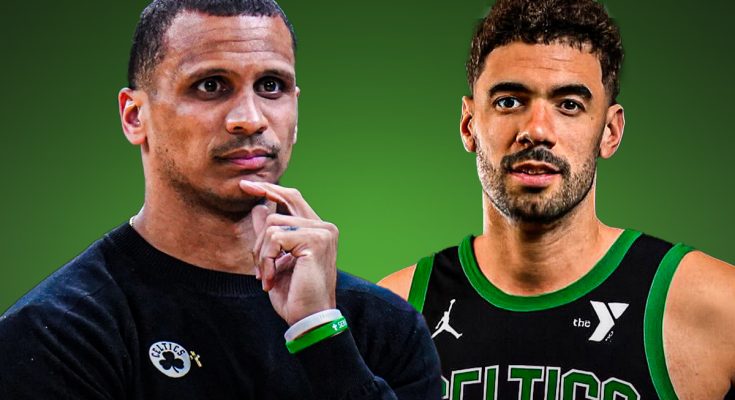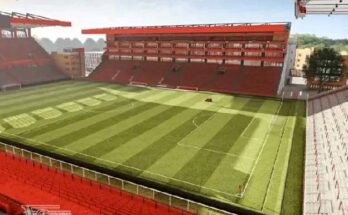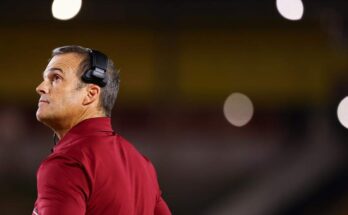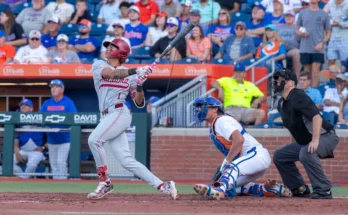The Celtics’ Strategic Choice to Trade Georges Niang to the Jazz Was a Calculated Move Aimed at Long-Term Team Balance and Growth
When the Boston Celtics decided to trade Georges Niang to the Utah Jazz, it wasn’t the kind of move that lit up social media or dominated headlines for days. There were no dramatic farewell press conferences, no league-shaking implications, and no shockwaves that left analysts scrambling to make sense of it. But underneath the surface, the decision was deliberate, calculated, and steeped in strategic thinking.
Roster moves in the NBA are rarely as simple as they appear. While fans often see them as straightforward swaps—one player out, another in—the reality is that each trade is the result of countless hours of discussion, data analysis, scouting, and forecasting. The Celtics’ front office didn’t just wake up one morning and decide Niang should be headed to Salt Lake City. They considered the roster fit, the team’s future direction, financial flexibility, and how this move would ripple through the rest of their plans.
For Niang, his time in Boston was defined by versatility, shooting ability, and a willingness to play his role without ego. He was the kind of glue guy who could space the floor, hit open shots, and bring energy off the bench. His three-point shooting was a weapon, and his basketball IQ allowed him to slot into different lineups without disrupting rhythm. But the Celtics’ coaching staff and management recognized that as valuable as Niang was, the team’s trajectory demanded a different kind of roster construction moving forward.
The 2025 offseason presented the Celtics with a complex puzzle. The core of Jayson Tatum and Jaylen Brown remains intact, but the supporting cast has been an evolving piece of the championship equation. Boston has been chasing the perfect balance between high-level perimeter offense, interior defense, and depth that can withstand the grind of an 82-game season and a deep playoff run. In that pursuit, hard decisions had to be made, and Niang became a part of that equation.
Part of the reasoning behind the move centered on minutes and role allocation. While Niang could knock down shots and stretch defenses, his playing time often came at the expense of developing younger talent or experimenting with different small-ball configurations. The Celtics wanted to open space in the rotation for players who could bring more defensive versatility while still keeping the offense flowing. It wasn’t an indictment of Niang’s abilities—it was about the margins and the kind of player Boston felt it needed more of in the long run.
Financially, the deal also made sense. NBA roster-building is as much about managing the salary cap and luxury tax implications as it is about on-court performance. By moving Niang, the Celtics created additional flexibility that could be leveraged for future trades or free-agent signings. In a league where contracts and cap space are assets in themselves, the trade was as much about positioning for the next move as it was about the player involved.
From Utah’s perspective, acquiring Niang was about adding a proven shooter and a veteran presence who could help space the floor for their young playmakers. For Boston, it was about reshaping the bench unit into one that better fits the current vision. The Celtics aren’t in rebuild mode—they’re in fine-tuning mode, and every roster spot matters.
Of course, Niang’s departure wasn’t just a basketball decision—it was a cultural one too. He was well-liked in the locker room, respected by teammates, and known for his upbeat personality. Moves like this test a team’s chemistry, but the Celtics’ leadership group, both in the front office and among the players, understands that chasing championships often requires separating personal feelings from strategic priorities.
The trade also sends a subtle but important message about Boston’s mindset. They are not content with “good enough.” Niang was a reliable contributor, but the Celtics are aiming for optimal fit and performance at every position. They’re willing to part ways with solid players if they believe it will give them a better shot at a title. This kind of aggressive but calculated decision-making is what has kept Boston in the championship conversation over the past few seasons.
Looking back, there’s a pattern in how the Celtics operate. They identify the team’s strengths, isolate the weaknesses, and make moves that maximize their core players’ abilities. With Tatum and Brown as the foundation, every surrounding piece is evaluated on how well it complements their skill sets. Niang’s shooting complemented them well, but the front office may have determined that adding more defensive length or a different type of bench scoring would give the team a higher ceiling.
Fans may initially question moves like this, especially when they involve a player as likable and dependable as Niang. But history shows that successful teams often make these kinds of decisions—ones that seem small at first but end up having a big impact over the course of a season. Sometimes it’s not about upgrading in obvious ways but about refining the balance, improving matchups, and creating the right mix of skills to win in the playoffs.
For Niang himself, this trade is an opportunity. In Utah, he can carve out a larger role, take more shots, and showcase his game in ways that weren’t always possible in Boston’s system. He’ll bring leadership and shooting to a Jazz team looking to make strides in a competitive Western Conference. In many ways, it’s a mutually beneficial move—Boston gets the flexibility it wanted, and Niang gets a fresh opportunity to thrive.
The Celtics’ front office, led by decision-makers who have learned the value of timing in the NBA, clearly sees this as a move that aligns with their long-term vision. They aren’t thinking about just the next game or the next month—they’re thinking about the roster they’ll have when it’s time to make another deep playoff run. Whether that means adding a defensive specialist, a secondary playmaker, or another big who can protect the rim, the Niang trade is a step in that process.
In the end, trading Georges Niang wasn’t about subtracting—it was about creating space, both literally on the court and figuratively within the team’s structure, for the Celtics to evolve. It was about intent. It was about seeing the bigger picture and making the kind of tough, forward-thinking decision that championship teams make before they’re forced to.
And that’s the thing about moves like this—they’re not flashy, but they matter. They’re the quiet adjustments that can make the difference between falling short in May and raising a trophy in June. For Boston, the hope is that this trade will be remembered not for who they lost, but for how it positioned them to win.
Georges Niang will be missed in Boston, not just for his shooting but for the spirit he brought to the team. But the Celtics’ willingness to make this move shows they are all-in on their pursuit of greatness. They’re not afraid to take risks, to adjust, to keep pushing for that perfect roster blend. In a league where standing still often means falling behind, the Celtics are making sure they’re always moving forward.
If Boston reaches its ultimate goal in the near future, this trade may be one of those moves that, in hindsight, makes perfect sense. Until then, it stands as a reminder that in the NBA, intent is everything—and the Celtics made this move with a clear one in mind.



